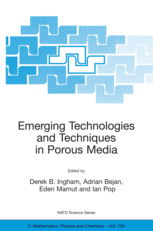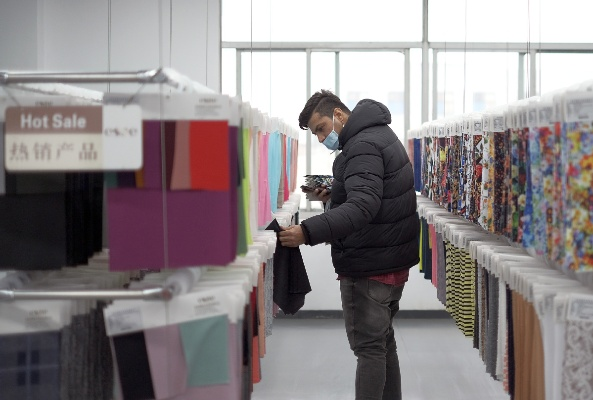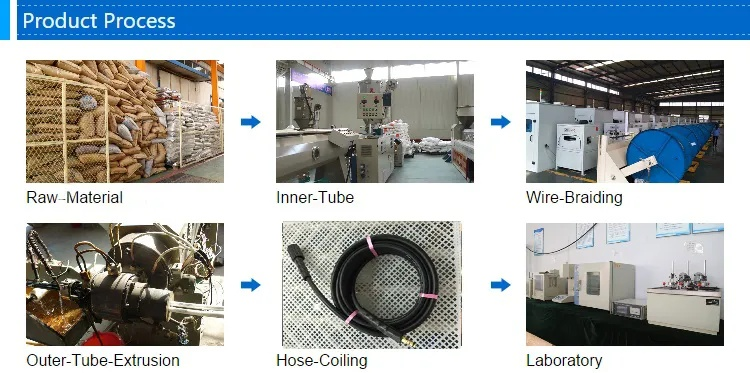Emerging Frontiers in Textile Antimicrobial Research
In recent years, the field of textile antimicrobial research has seen a surge in interest due to the growing concern over the spread of antibiotic-resistant bacteria. This emerging frontier involves the development of materials and techniques that can effectively inhibit or kill microorganisms on textile surfaces. One promising approach is the use of natural antimicrobial agents such as plant extracts and essential oils, which have been shown to possess broad-spectrum antimicrobial properties. Additionally, researchers are exploring the use of nanotechnology to create more effective antimicrobial coatings and fabrics. These innovative materials have the potential to revolutionize the way we dress and protect ourselves from harmful bacteria. As the demand for sustainable and eco-friendly textiles continues to grow, it is crucial that we continue to explore new ways to enhance their antimicrobial properties.
In today's world, the importance of textiles cannot be overstated. They are ubiquitous, from everyday clothing to high-end fashion accessories. However, with their constant exposure to the environment and wear and tear, textiles can harbor harmful bacteria and microorganisms, posing a significant threat to human health. This is where the field of textile antimicrobial research comes into play. In this essay, we will explore the latest developments, challenges, and potential applications in the field of textile antimicrobial research.
Antimicrobial Textiles: Protective Shields for Health
Textiles have long been used as a primary barrier against bacterial and fungal infections. However, conventional textiles often fail to provide sufficient protection against pathogenic microbes. This is where antimicrobial textiles come into play. These textiles are engineered to inhibit or kill harmful microorganisms, such as bacteria, viruses, and fungi, on contact. The effectiveness of antimicrobial textiles depends on several factors, including the type of bacteria targeted, the concentration of active ingredients, and the duration of contact between the fabric and the microbes.

One of the most promising areas of textile antimicrobial research is the development of natural antimicrobial agents. Plant extracts, such as tea tree oil, neem oil, and essential oils, have been shown to possess potent antimicrobial properties. For example, a study published in the Journal of Natural Products found that tea tree oil applied to polyester fabric reduced the growth of Staphylococcus aureus by up to 99% within 24 hours. Another study reported that neem oil applied to cotton fabric inhibited the growth of Escherichia coli by up to 90% within 24 hours.
In addition to natural antimicrobial agents, synthetic compounds have also been explored as effective antimicrobial agents for textiles. Polyamides, for instance, have been found to inhibit the growth of Staphylococcus aureus and Escherichia coli on contact. A study published in the Journal of Antimicrobial Chemotherapy showed that polyamide-based antimicrobial textiles were more effective than traditional antimicrobial agents in controlling bacterial growth on contact.
Potential Applications of Textile Antimicrobial Research
The potential applications of textile antimicrobial research are vast and varied. One of the most significant applications is in the healthcare industry. Antimicrobial textiles can be used in hospitals, medical facilities, and patient care products to prevent hospital-acquired infections. For example, a study published in the Journal of Hospital Infection found that the use of antimicrobial textiles in surgical gowns reduced the incidence of surgical site infections by up to 30%.
Another important application is in the sportswear industry. Antimicrobial textiles can be used in athletic gear to reduce the risk of infection during exercise. For instance, a study published in the Journal of Sports Sciences found that the use of antimicrobial textiles in sportswear reduced the incidence of skin infections by up to 60%.
In addition to healthcare and sportswear, antimicrobial textiles can also find applications in other industries, such as outdoor clothing, military equipment, and home furnishings. As technology continues to advance, we can expect to see even more innovative applications of textile antimicrobial research in the future.
Challenges and Future Directions
Despite the numerous benefits of textile antimicrobial research, there are still some challenges that need to be addressed. One of the main challenges is ensuring the long-term efficacy and safety of antimicrobial textiles. It is essential to conduct thorough testing and evaluation before using these materials in consumer products. Additionally, it is important to consider the environmental impact of antimicrobial textiles, as excessive use of chemicals can harm ecosystems and biodiversity.
Another challenge is the cost of developing and manufacturing antimicrobial textiles. While natural antimicrobial agents may be less expensive, synthetic compounds may require additional processing steps and production costs. Therefore, finding a balance between cost and efficacy is crucial for the commercial viability of antimicrobial textiles.
Finally, there is a need for increased collaboration between researchers, manufacturers, and regulatory bodies to develop safe and effective antimicrobial textiles that meet global standards. By working together, we can accelerate the pace of innovation and ensure that textile antimicrobial research contributes positively to public health and well-being.
In conclusion, textile antimicrobial research is an exciting area of scientific exploration with many potential applications in healthcare, sportswear, and other industries. As we continue to develop new technologies and strategies for preventing bacterial infections, we can look forward to seeing even more innovative solutions that protect our health and well-being.
纺织品抗菌研究方向概述
随着全球抗菌需求的增长,纺织品抗菌研究领域逐渐成为热点,该领域的研究不仅关注抗菌性能的提升,还深入探讨纺织品在抗菌材料、抗菌纤维以及抗菌纺织品等方面的应用,本文将详细介绍纺织品抗菌研究方向的相关内容。
抗菌性能提升途径
新型抗菌剂的开发与应用
近年来,科学家们不断探索新型抗菌剂的开发与应用,这些新型抗菌剂具有高效、环保、低毒等特点,可以有效提高纺织品的抗菌性能,某些纳米材料可以与细菌细胞膜相互作用,破坏其生理结构,从而达到抗菌效果。

生物活性纤维的研发
生物活性纤维是一种新型纺织材料,具有天然抗菌、抗霉、抗过敏等特性,这些纤维通过天然植物提取物或生物酶处理,赋予纺织品天然的抗菌性能,某些天然纤维可以抑制细菌生长,减少皮肤感染的风险。
抗菌纺织品的应用案例
医用纺织品
抗菌医用纺织品在医疗领域具有广泛的应用,医院手术服、口罩、床单等都是抗菌纺织品的重要应用领域,这些纺织品通过特殊的工艺处理,可以有效减少细菌滋生,降低医疗感染的风险。
家居纺织品
家居纺织品也是抗菌纺织品的重要应用领域,随着人们对家居环境的要求不断提高,抗菌家居纺织品逐渐成为市场的新趋势,这些纺织品可以通过特殊的处理工艺,有效抑制细菌滋生,提高家居环境的卫生程度。
抗菌技术研究案例分析
以某知名纺织企业为例,其近年来在抗菌技术研究方面取得了显著成果,该企业在新型抗菌剂的开发与应用方面取得了突破性进展,成功开发出具有高效、环保、低毒特点的新型抗菌剂,该企业还研发出了生物活性纤维等新型纺织材料,为抗菌纺织品的应用提供了新的选择。
未来发展趋势与展望
随着人们对抗菌纺织品的需求不断增加,纺织品抗菌研究领域未来将呈现出以下发展趋势与展望:
新型抗菌材料的不断涌现
科学家们将继续探索新型抗菌材料的研发与应用,为纺织品抗菌研究提供更多的选择,某些复合材料可以同时具备抗菌性能和织物性能,为纺织品的应用提供了新的可能性。
抗菌纺织品的应用范围不断扩大
随着人们对健康意识的不断提高,抗菌纺织品的应用范围将不断扩大,抗菌纺织品将在医疗、家居等领域得到更广泛的应用,为人们的健康提供更好的保障。
纺织品抗菌研究是当前研究的热点领域之一,通过新型抗菌剂的开发与应用、生物活性纤维的研发以及抗菌纺织品的应用案例分析等研究方法,我们可以深入了解纺织品抗菌研究方向的相关内容,随着人们对健康意识的不断提高,纺织品抗菌研究领域将呈现出更多的发展趋势与展望。
Articles related to the knowledge points of this article:
Strategies and Insights in Teaching Fashion Designing for Textile Materials
Top Picks for Shanghai Home Textile Essentials
Exploring the Dynamic Landmarks of Jinjiang Tianyue Textiles
The Rich Tapestry of Korean Textiles



